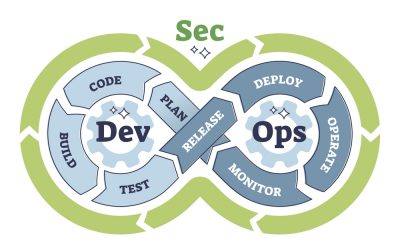Highlights:
- The objective, as outlined by the initiative’s supporters, is to simplify the assembly of AI clusters containing numerous chips.
- The group intends to establish an official industry consortium in the third quarter to supervise the development effort.
Eight major companies, including Intel, Google, and others, have united to launch the UALink Promoter Group, a newly announced initiative focused on artificial intelligence hardware.
The project aims to develop an industry-standard method for linking AI chips, such as graphics processing units. The initiative’s supporters explained that the goal is to simplify the assembly of AI clusters with numerous chips. Additionally, enhancing infrastructure scalability is another objective.
The UALink Promoter Group is supported by chipmakers Intel Corp., Advanced Micro Devices Inc., and Broadcom Corp. Additionally, two of the three largest cloud providers, Microsoft Corp. and Google LLC, are involved, along with Meta Platforms Inc., Cisco Systems Inc., and Hewlett Packard Enterprise Co. This initiative is viewed as a counterbalance to Nvidia Corp.’s dominance in GPUs and related systems.
The group intends to establish an official industry consortium in the third quarter to oversee the development efforts. This consortium, to be named the UALink Consortium, will launch the first version of its AI interconnect technology later that same quarter. The specification will be available to all participating companies.
Advanced AI models are generally trained using several processors. Each processor handles a separate copy of the neural network and processes a small portion of the training data. The chips synchronize their copies of the neural network to finish the development process, which requires a channel for the chips to communicate with each other.
The intended purpose of the UALink Consortium’s planned interconnect is to meet this requirement. As per the group, the technology will enable the linking of up to 1,024 AI accelerators within a single cluster. Furthermore, UALink will have the capability to connect these clusters to network switches, which can aid in optimizing the flow of data traffic among the individual processors.
The consortium outlined that one of the upcoming features includes the ability to facilitate “direct loads and stores between the memory attached to accelerators.” Enabling direct access to the memory of AI chips is a method to accelerate machine learning applications. Nvidia Corp. also offers an implementation of this technique known as GPUDirect, which is available for its data center graphics cards.
Typically, data traveling from one GPU to another undergoes multiple intermediary stages before reaching its final destination. Specifically, this data must pass through the central processing units (CPUs) of the servers housing the graphics cards. Nvidia’s GPUDirect technology enables bypassing the CPU, thus facilitating quicker data transmission to its destination and consequently accelerating processing speeds.
The UALink Consortium marks the emergence of at least the third industry group concentrating on AI chips within the last five years.
AI clusters comprise not just machine learning accelerators but also CPUs tasked with various supporting functions. In 2019, Intel introduced an interconnect named CXL, designed for linking AI accelerators to CPUs. Concurrently, it initiated an industry consortium aimed at advancing the standard’s development and widespread adoption.
A modified form of the popular PCIe interconnect used to connect server components is called CXL. Intel altered the former technology using various AI-specific optimizations. One of those optimizations makes it possible for the interconnected CPUs and GPUs in an AI cluster to share memory, improving the efficiency of data exchange.
In the previous year, Intel collaborated with Arm Holdings plc and several other chip manufacturers to introduce an AI software consortium known as the UXL Foundation. The consortium aims to simplify the development of AI applications capable of running on various types of machine learning accelerators. The technology being developed by the UXL Foundation for this purpose is built upon oneAPI, an Intel-originated toolkit for constructing multiprocessor software.



















